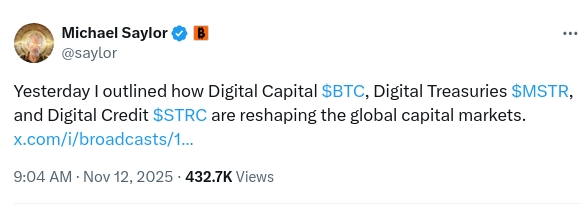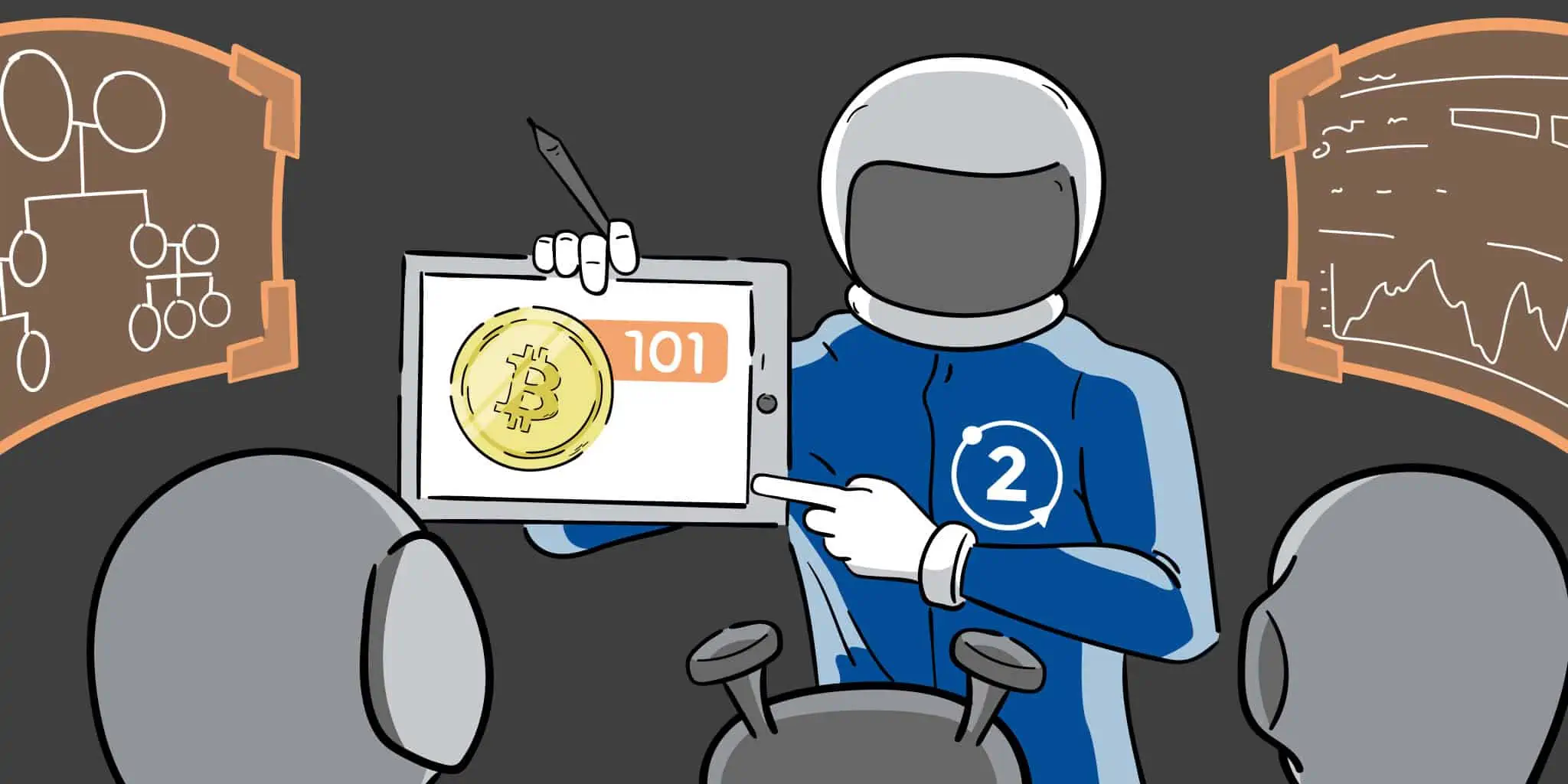
Michael Saylor wants to redefine the financial system, proposing a digital credit market based on Bitcoin, which will displace traditional assets and consolidate an innovative corporate treasury model.
During his presentation at the Cantor Crypto Event, organized by the financial services firm Cantor Fitzgerald, Michael Saylor did not simply reiterate his well-known bullish stance on Bitcoin and cryptocurrencies. The CEO of Strategy, formerly known as MicroStrategy, presented a financial thesis that seeks to transcend mere asset accumulation and propose a new global economic structure: the digital credit market.
According to the executive, this new financial frontier has the potential to move trillions of dollars, based exclusively on the strength of Bitcoin as a base capital.
The presentation, which took place on November 10th, served as a platform to explain the company's comprehensive transformation. Strategy has ceased to be seen by the market solely as an enterprise software firm, establishing itself as the first tangible example of a "digital treasury business model".
With control of more than 3,1% of the total bitcoins in circulation, Saylor's company has begun to operate under a logic that challenges traditional corporate accounting standards, prioritizing digital assets over fiat money.
Create your account and connect with the Bitcoin economyFrom store of value to yield generation with Bitcoin
The core of Saylor's proposal lies in the evolution of Bitcoin within corporate balance sheets. While the cryptocurrency was initially adopted as a tool to protect against inflation and currency devaluation, the next phase envisions its active use. In this context, Saylor introduced the concept of digital credit instruments, designed for use Bitcoin as collateralUnder this premise, the company has begun experimenting with financial products called Stretch, Stride, and Strife, whose purpose is to structure risk and return levels adapted to the characteristics of the digital asset.
Saylor's vision suggests that it is possible to build a scalable and stable global credit market. His proposal is based on offering attractive returns, theoretically eliminating the counterparty risk associated with traditional finance.
Saylor argues that if a financial product with a competitive annual return can be offered, free from the frictions of conventional banking and backed by an instantly liquid asset like Bitcoin, then the ultimate financial instrument would have been created.

The strategy presented Saylor's move marks a significant operational shift. Historically, the company used traditional debt to finance its Bitcoin purchases. Now, the goal is to reverse that equation: issue credit instruments backed directly by their Bitcoin reserves. This movement seeks to demonstrate that digital assets can be productive and generate capital flows without the need to sell the underlying position, acting as a "hard" capital base on which a more efficient credit economy can be built.
Bitcoin, starting capital: get started today with Bit2MeBitcoin and the new era of digital capital: the decline of traditional assets
To support the viability of this new market, Saylor offered a critical comparative analysis of current reserve assets. In his speech, he characterized fiat money, sovereign bonds, and gold as elements that, in the current economic context, exhibit a negative bias toward capital. According to his perspective, bonds have become toxic due to negative real interest rates, fiat money suffers systematic devaluation, and gold is inefficient for the speeds demanded by the digital economy.
In contrast, he described Bitcoin as an electrically and economically powerful asset, capable of preserving economic energy in the long termSaylor's view aligns with trends observed by other market analysts, who highlight a maturing ecosystem. Recent data indicates that approximately 400.000 bitcoins have migrated from long-term investors to institutional portfolios in the last month, validating the thesis that "smart money" is seeking refuge in digital infrastructure.
Saylor also linked this capital revolution to the rise of artificial intelligence. He argued that in a future dominated by billions of autonomous digital agents, the store of value will not be physical assets or government debt, but a native internet network. convergence between AI and programmable money This reinforces the need for a tokenized financial system, where eventually stocks, bonds, and real estate could be represented on the Bitcoin network.
Build your digital treasury with Bitcoin hereStrategy fuels the rise of digital equity companies
Strategy's transformation could be just the beginning of a broader trend in the corporate world. By positioning itself as a "digital capital company," the firm is attempting to prove that it's possible to operate with a treasury based on finite assets, protecting shareholder value in a way that traditional companies, tied to the dollar or the euro, cannot replicate.
During her presentation, Saylor made clear a message that resonates throughout the crypto ecosystem: Bitcoin has established itself as the foundation of a new global financial structureIf the implementation of these digital credit instruments works properly, the market could be facing the emergence of a massive industry in which value will no longer depend on trust in central banks and will instead be based on the security and cryptographic verification of the most robust network in the world.

Bitcoin 101 Course
Medium levelIn Bit101Me Academy's Bitcoin 2 Course you can continue your crypto education and learn what Bitcoin is, where it comes from and how to obtain it.


